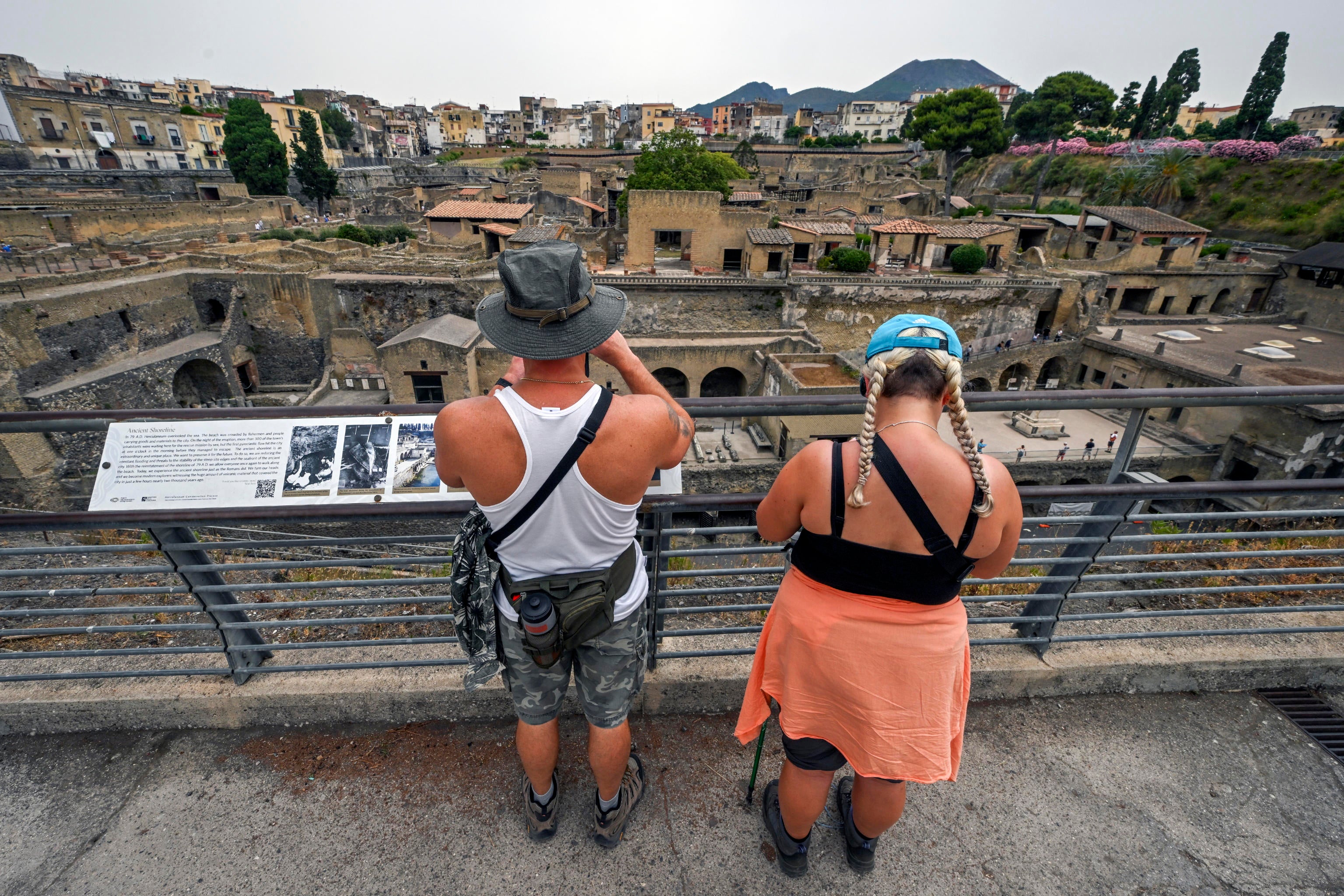
An ancient Roman beach, located in the Herculaneum archaeological park in Italy, has been opened to the public for the first time since it was destroyed by Mount Vesuvius in 79 AD. The beach, which was a popular resort town for Rome's patrician families due to its location and mild climate, holds valuable information about how inhabitants lived and died during that time. Among the human remains found at the site are those of a 'Ringed Lady' and a senior Roman soldier with belt and weapons. Additionally, the remains of a man known as 'the last fugitive' were discovered clutching a satchel containing a ring near the shoreline.
Herculaneum, founded by the Oscans in 7th century BC, was located in modern-day Campania. The town was buried under volcanic ash and pumice during the eruption of Mount Vesuvius. Many centuries later, archaeologists began excavating the site and discovered evidence of a once thriving ancient beach.
The human remains found at the site provide valuable insights into how people lived during that time. For instance, the 'Ringed Lady' was believed to be a wealthy woman based on her jewelry and other belongings found with her remains. The senior Roman soldier, on the other hand, was likely part of Rome's military forces stationed in the area.
The discovery of 'the last fugitive' is particularly intriguing as he was found trying to escape towards the sea with precious objects during excavations in 2021. This finding suggests that some people may have tried to flee the disaster and were unable to do so.
Herculaneum is not the only ancient Roman site affected by Mount Vesuvius' eruption. Pompeii, another popular tourist destination, was also buried under volcanic ash and pumice during the same event. Both sites have been extensively excavated and restored over the years.
The restoration of Herculaneum's ancient beach is a significant achievement for archaeologists as it provides visitors with a unique opportunity to experience the town before it was destroyed by Mount Vesuvius. The site is now open to the public, allowing people to explore and learn about this fascinating piece of history.






